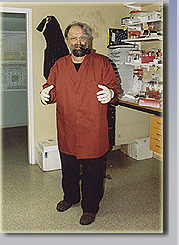|
The main aim
of our work is to understand how the present-day genetic diversity of
Homo sapiens sapiens arose. Though not solely, we concentrate on a
world-wide variation of haploid genomes – on maternally inherited
mitochondrial DNA (mtDNA) and paternally inherited Y chromosome. We are
particularly interested in the early phase of the spread of modern humans
from Africa to Eurasia, Australia, and to the New World. We are equally
interested in the consequences of the major environmental events like the
last and previous glacial maximae and lesser ice ages, to the demographic
history of human populations: colonisations and re-colonisations that
inevitably have had a major impact. And then there are equally exiting
events like neolithization. Above that, there are ever-debated questions
about the spread of genes and languages, in particular language change. And
gender-related differences in the demographic history. In sum, what we are
interested in, is phylogeography, to be understood in terms of demographic
history, a plethora of stochastic processes, and, of course, of natural
selection. And, to certain extent, the last sentence can be reversed: it is
(demographic) history etc., to be understood by phylogeography. |










